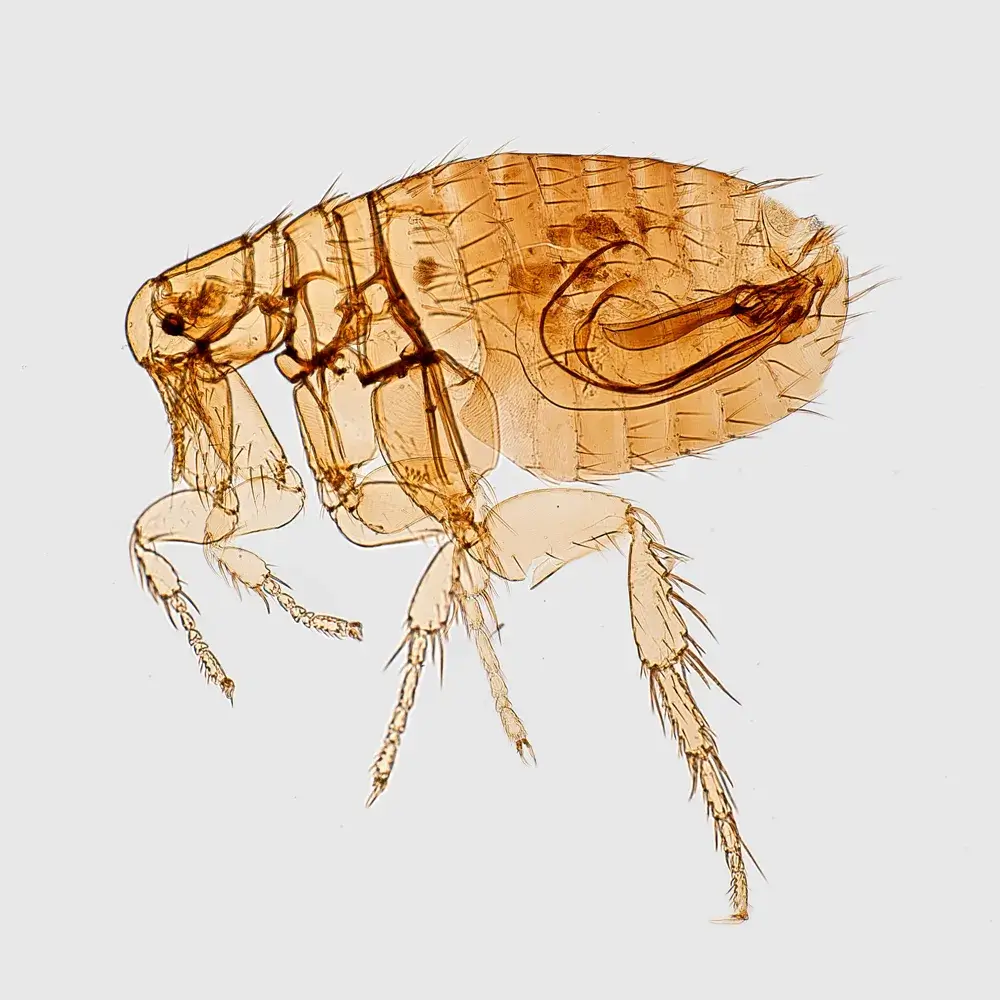
North Carolina Pest Identification: Fleas
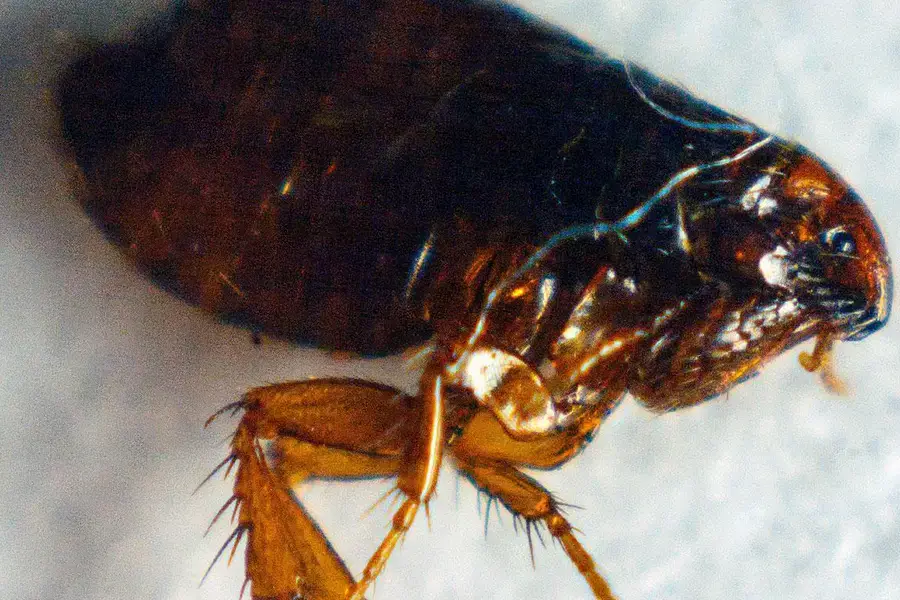
Bug Identifier: Know Your Fleas
Fleas are tiny, blood-sucking parasites that can infest our homes and pets, causing discomfort and irritation. In North Carolina, where the climate is generally favorable for fleas throughout the year, it’s crucial to be able to identify the different species of fleas that can be found in the region. Knowing what you’re up against is the first step in effective flea control.
Flea Identification in North Carolina
Whether you have pets or not, understanding the characteristics of these fleas can help you take appropriate measures to prevent infestations and address them promptly if they occur.
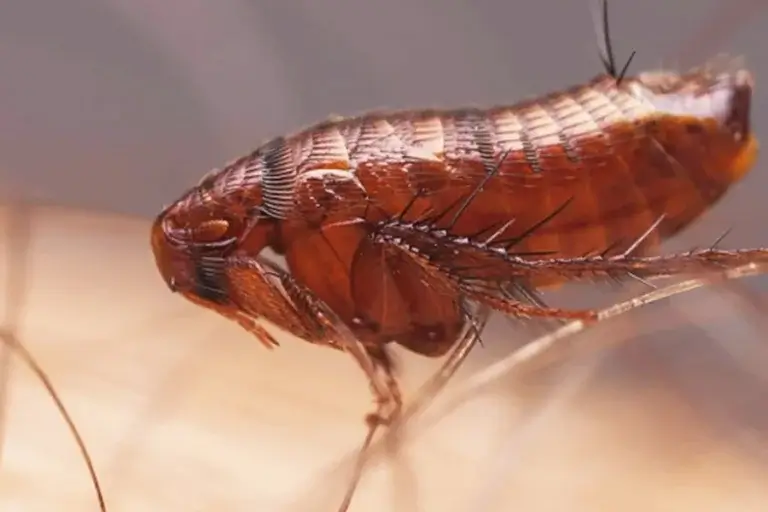
Cat Flea
The cat flea is the most common flea species in North Carolina. Despite its name, it can be found on both cats and dogs.
These fleas are reddish-brown in color and are about 1-2 mm long. They have flattened bodies, which allow them to easily move through the fur of their hosts. Cat fleas are known for their powerful hind legs, which enable them to jump impressive distances. They feed on the blood of their host and can cause itching, skin irritation, and even transmit diseases.
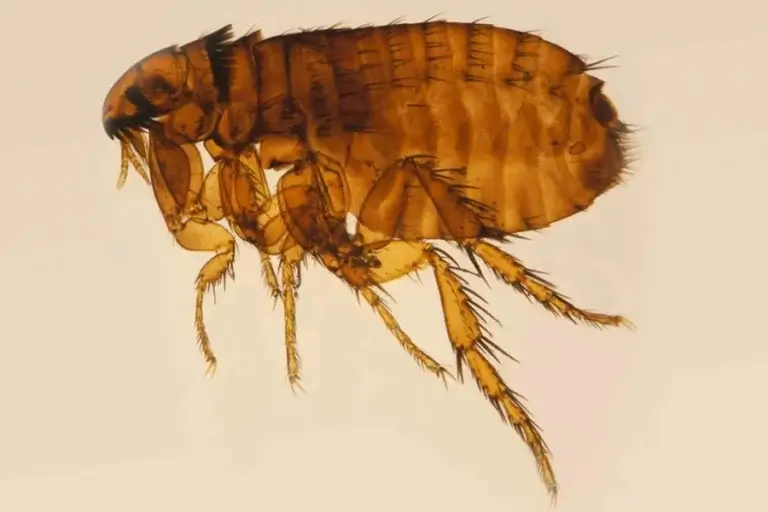
Dog Flea
The dog flea is another common species found in North Carolina. As the name suggests, it primarily infests dogs, but it can also affect cats and other animals.
Dog fleas are similar in appearance to cat fleas, with reddish-brown bodies and powerful hind legs. They are about the same size as cat fleas and have the same feeding habits.
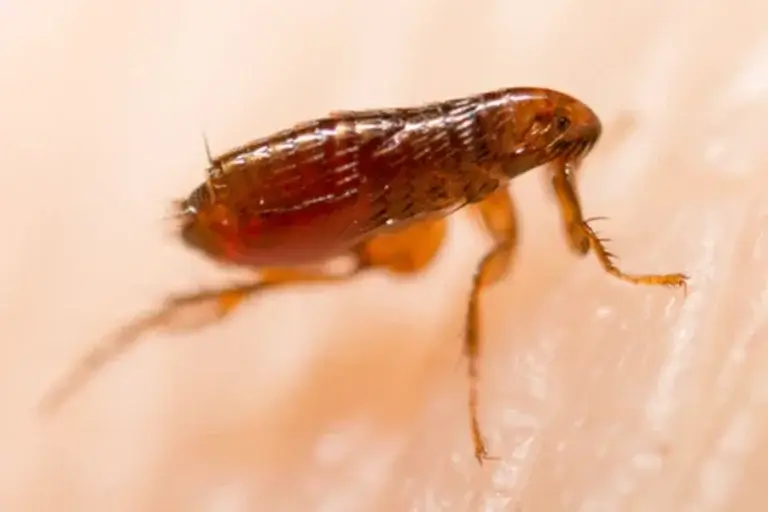
Human Flea
While less common than cat and dog fleas, the human flea can still be found in North Carolina. These fleas can infest humans and are usually associated with poor sanitation conditions. Human fleas are small and reddish-brown, with long, backward-pointing spines on their bodies. They are known for their painful bites, which can cause severe itching and discomfort.
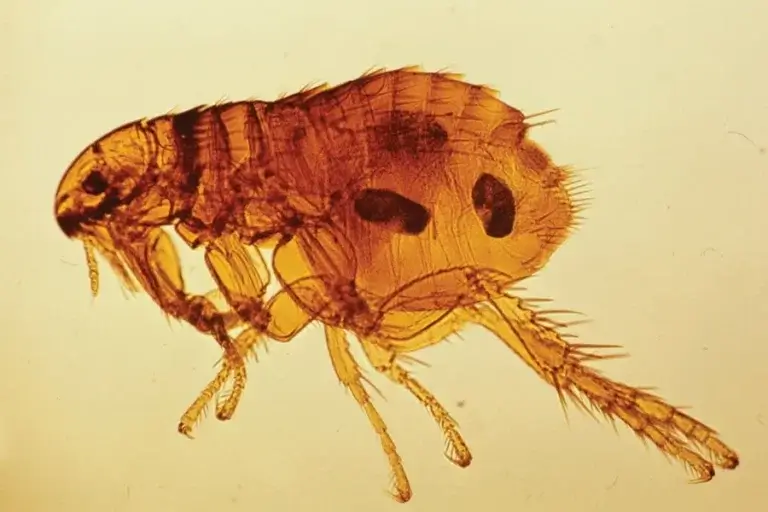
Oriental Rat Flea
The Oriental Rat Flea, or Xenopsylla cheopis, is less common in residential areas but can be found in North Carolina. It is associated with rodents, particularly rats, and can transmit serious diseases like bubonic plague.
Oriental Rat Fleas are slightly larger than cat or dog fleas, measuring around 2-4 mm in length. They are dark brown to black and have a compressed body shape, making them well-adapted for moving through the fur of rodents.

Where Fleas Live
Fleas are most commonly found in environments where they can thrive and feed on warm-blooded animals. They are frequently encountered in the following places:

Pets
Fleas often infest dogs and cats, where they live in their fur and feed on their blood. Regular grooming and preventative treatments are essential for pet owners to control fleas.

Yard and Garden
Fleas can be present in outdoor areas where pets play, especially in grassy and shaded areas. They lay eggs in the soil and can jump onto passing animals.

Indoors
Fleas can make their way inside homes through pets or by hitching a ride on clothing or shoes. Once inside, they can infest carpets, rugs, bedding, and upholstered furniture.

Wildlife Habitats
Fleas can also be found in the nests or dens of wild animals such as rodents, squirrels, and raccoons. These animals can carry fleas into residential areas.

How Humans Get Fleas
Humans can get fleas when they come into contact with infested animals, such as dogs or cats, or infested environments like homes with a flea infestation. Fleas can jump from their host onto humans, and their bites can lead to itching and discomfort.

Symptoms & Diseases Caused by Fleas
Fleas can carry and transmit various diseases, although it's important to note that not all fleas are infected with these diseases, and not all flea bites will lead to illness in humans or animals.
Plague
This infamous disease is most commonly associated with fleas. Symptoms can include sudden fever, chills, weakness, swollen and painful lymph nodes, and in severe cases, pneumonia or septicemia.
Murine Typhus
Symptoms may include fever, headache, muscle aches, joint pain, nausea, and a rash. It's usually a milder illness compared to plague.
Cat Scratch Disease
While cats are the primary reservoir for this bacterium, fleas can transmit it. Symptoms in humans include swollen lymph nodes, fever, fatigue, and sometimes a pus-filled sore at the site of the scratch or bite.
Flea Allergic Dermatitis
This is not an infectious disease but an allergic reaction to flea saliva. Some pets and humans are highly sensitive to flea bites, leading to severe itching, redness, and skin irritation.
Tapeworm Infection
Fleas can carry tapeworm eggs, which can lead to tapeworm infection in animals (especially cats and dogs). Symptoms in pets can include weight loss, scooting, and segments of the tapeworm in feces or around the anus.
What to Do if You Have Fleas on Your Property
Dealing with fleas in your home or yard can be a frustrating task, but with a systematic approach, you can effectively eliminate them.
Fleas In Your Home
As we mentioned, fleas can make their way into your home from outside environments. If that happens, here’s what you should do.
Identify the Problem
First, confirm that fleas are the issue. Look for signs like itchy pets, small brown insects on your pet’s fur, or tiny black specks (flea dirt) on bedding or furniture.
Treat Your Pets
Begin by treating your pets. Consult your veterinarian for flea treatment options such as topical solutions, oral medications, or flea collars. This prevents fleas from continuing to infest your home.
Wash Bedding and Upholstery
Wash your pet’s bedding, your own bedding, and any upholstered furniture covers or pillows that your pet frequently uses. Use hot water and a high-heat dryer setting to kill fleas and their eggs.
Vacuum Thoroughly
Vacuum your entire home, paying close attention to areas where your pet spends time. Vacuum not only the floors but also carpets, rugs, and even furniture. Empty the vacuum cleaner bag or canister immediately after each use to prevent fleas from escaping.
Treat Your Home
Consider using an effective flea control product for your home, such as flea sprays, powders, or foggers. Make sure to follow the product’s instructions carefully, and treat all areas where your pet roams.
Outdoor Pest Control
If your pet spends time outdoors, consider treating your yard and outdoor living spaces with pet-safe flea control products or hiring a pest control service.
Regular Cleaning
Maintain cleanliness in your home by vacuuming regularly and washing your pet’s bedding frequently. This helps prevent re infestations.
Monitor Your Pets
Continue to monitor your pets for signs of fleas and reapply preventative treatments as recommended by your veterinarian.
Consult a Professional
If the infestation persists despite your efforts, or if you have a severe infestation, consider consulting a professional pest control service for expert assistance.
Fleas In Your Yard
Dealing with fleas in your yard requires a combination of preventive measures and targeted treatments to eliminate these pesky pests.
Identify the Problem Areas
Start by identifying areas in your yard where fleas are most likely to thrive. These are typically shaded, moist, and warm spots such as tall grass, shrubs, and areas frequented by pets.
Maintain Your Yard
Keep your lawn well-maintained by mowing it regularly and trimming shrubs and bushes. Fleas thrive in tall grass, so cutting it short reduces their hiding places.
Remove Organic Debris
Fleas often hide in organic debris like leaves, fallen branches, and grass clippings. Clean up these materials regularly to reduce flea hiding spots.
Limit Wildlife Access
Secure trash cans and eliminate food sources to deter wildlife, like raccoons or opossums, that can bring fleas into your yard.
Pet Treatment
If you have pets, ensure they are on a regular flea prevention regimen. Consult your veterinarian for effective flea control products and follow their recommendations.
Natural Repellents
Consider using natural flea repellents like cedar chips or diatomaceous earth in flea-prone areas of your yard. These substances can deter fleas without using chemical pesticides.
Chemical Treatments
When natural methods aren’t enough, consider using chemical treatments. You can apply flea control products specifically designed for yards, such as sprays or granules. Follow the instructions on the product label carefully, and keep pets away from treated areas until it’s safe.
Consult Professionals
If your flea problem persists despite your efforts, consider consulting a pest control professional. They can assess the situation and provide specialized treatments to eliminate the infestation.
Prevent Future Infestations
After successfully dealing with fleas in your yard, maintain a proactive approach to prevent future infestations. Regularly clean up organic debris, keep your lawn well-groomed, and stay consistent with pet flea prevention.
Tick Facts:
Female Fleas Lay Up to 40 Eggs a Day
That means one female flea can lay more than 1,000 eggs in its lifetime. The eggs can hatch as quickly as one day, meaning just one flea can quickly multiply into a major infestation.
Fleas Can Jump
You may already know that fleas often jump to get to their prey, but did you know how far? They can jump up to 13 inches—that’s equivalent to 200 times their average length.
All Pets Can Get Fleas
It isn’t just dogs and cats that can get fleas, all animals are at risk of a flea infestation. That includes rabbits, guinea pigs, and rats.
FAQ
What do fleas look like?
It’s very difficult to see exactly what a flea looks like without some sort of magnifying device like a microscope. However, we do know what they look like: they’re about 1/8th of an inch long, very thin, and reddish-brown in color. Although these features are difficult to see with the naked eye, what you usually can identify is their big black legs.
Can Dogs Get Fleas?
Yes, dogs can get fleas. Fleas are a common external parasite found on dogs, causing itching, discomfort, and sometimes health problems if left untreated. Regular flea prevention and control measures are essential for keeping dogs free from fleas.
Can humans get fleas?
While fleas are mostly known to be a problem for household pets like dogs and cats, they can be a problem for humans. Humans cannot get fleas- as in fleas cannot live on humans- but fleas can certainly bite humans, and those bites can be extremely itchy.
What do flea bites look like?
Flea bites become visible within an hour after the bite occurs. These bites appear as small red dots and usually occur in groupings around the lower legs, ankles, and feet.
Where do fleas come from?
Fleas usually make their way into homes via an animal, typically a household pet. Fleas will jump from animal host to animal host to travel because they aren’t very adept at traveling independently. Once they’ve made their way to a yard, they will hide in shady areas or in tall grass, lying in wait for a new host. This host can be your outdoor pet, which then gives them access to an easy host–and your home.
How do I know if I have fleas?
A flea infestation is relatively easy to identify, although it may not always be apparent right away. Some signs of fleas in the home include:
- Noticing your pets are scratching, licking, or biting at their fur more than usual.
- Observing unusual black colored dots in your pet’s fur.
- Observing fleas hopping around your home, especially on furniture and carpets.
How does A-1 Pest Control get rid of fleas?
Here is how flea treatments from the specialists at A-1 Pest Control work:
- Prior to the service, customers perform preparation steps that include cleaning recommendations and safety precautions. We also recommend customers have their pets treated and their pet’s bedding washed before our service.
- A-1 then applies treatment, utilizing a liquid broadcast treatment and an aerosol broadcast treatment to kill fleas. This is typically in the interior of the homes, but exterior treatments can also be done if necessary for an additional fee.
- After service, customers should vacuum all floor surfaces once daily to stimulate the flea eggs to hatch out.
- From the date of treatment, customers have a 60-day warranty. If your fleas aren’t gone immediately, don’t panic! The process just takes a little bit of time to work.
Having a problem with fleas? Just fill out a form or give us a call and we will get back to you with a consultation ASAP!
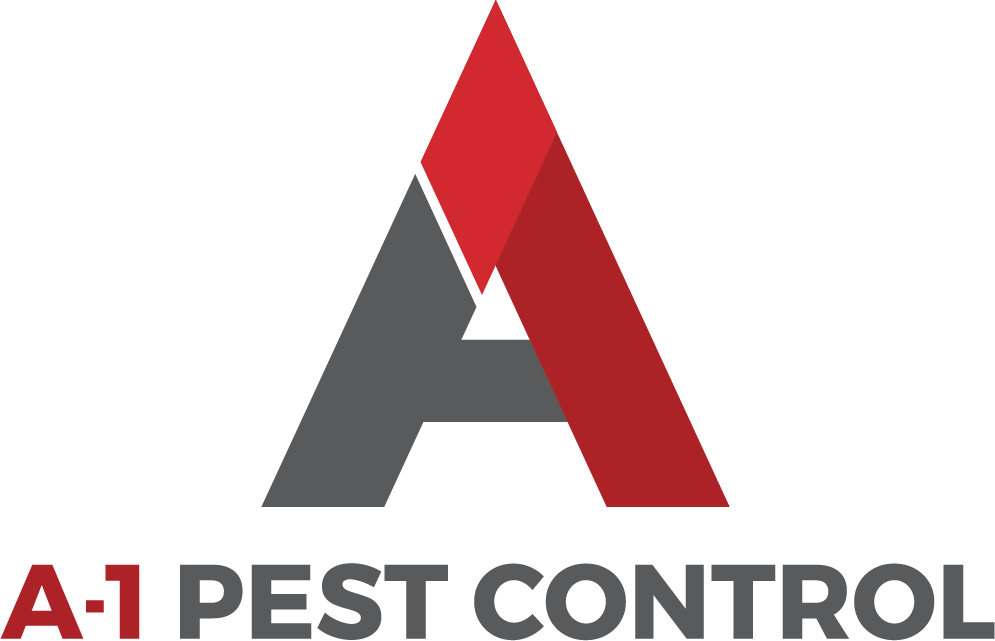
About A-1 Flea Control
If you’re looking for flea control in North Carolina, A-1 Pest Services has you covered, from flea prevention to extermination. Our family owned and operated company has been taking care of our community for over 50 years, with pest control plans that tackle everything from ticks to termites to nearly any pest you can think of. Our commitment to quality work and continued education has set us apart for decades, and we are proud to help our neighbors create happier, healthier homes.
We serve Lenoir, Mooresville, Hickory, Blowing Rock, West Jefferson, and surrounding areas in North Carolina.

